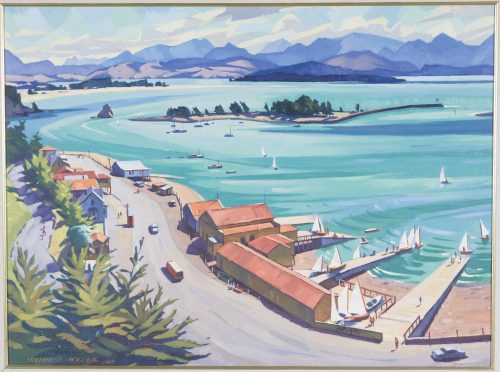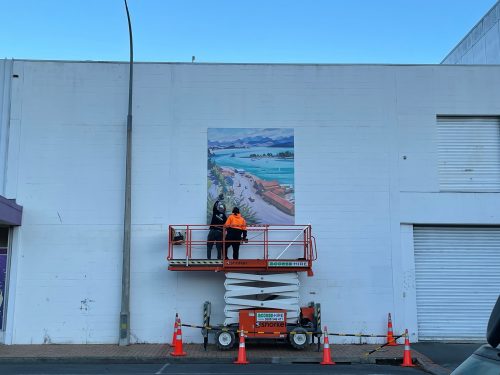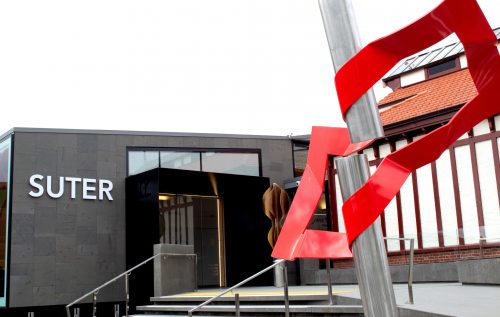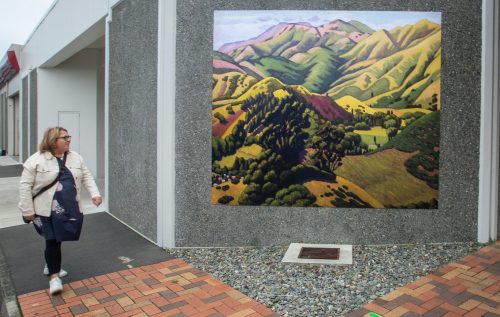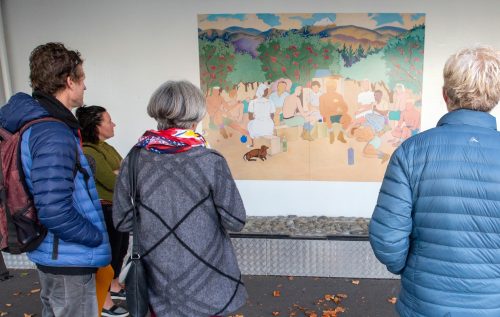Nelson often tops New Zealand as the country’s sunniest city so it’s no wonder it’s a popular destination for summer holiday makers. The flat shallow waters of Tahunanui Beach are popular with swimmers, paddle boarders and kayaks, while the windswept channel of the Back Beach offers perfect conditions for wind and kitesurfers. The safe harbour is not only for freighters and commercial deepsea fishing fleets, but for yachts, rowing boats and waka.
The Boulder Bank, Haulashore Island & Arrow Rock
Nelsonians may be blasé about the Boulder Bank, but this 13.5km barrier is a unique geological feature composed of granodiorite pebbles, cobbles and boulders derived from Mackay Bluff, north of Glenduan. For Māori, the haven was known for snapper.
Originally, Haulashore Island was part of the Boulder Bank, with the main entrance to the harbour through the narrow channel guarded by Arrow Rock. In 1842, the Fifeshire, full of English settlers, ran aground. The rapid growth of Nelson Port demanded that the channel be deepened, so in 1850-53, Arrow Rock was repeatedly blasted (Arrow Rock was named after the first ship to sail into Nelson Harbour, the Arrow in 1841. She was only a year ahead of the ill-fated Fifeshire. The Rock still retains both names.)
In the 1870s, the Waimea River changed its course causing the channel around Haulashore Island to silt up and increasing the number of vessel strandings.
Finally, in 1906 an artificial shipping channel was created, aptly named The Cut. Interestingly, the national government of the time would not agree to the expensive works on The Cut until a Harbour Board was formed, so The Cut marks the birth of modern Port as well as being an engineering feat.
Today, the Boulder Bank is managed as a scenic reserve by Department of Conservation. There’s a comprehensive timeline for Port Nelson on The Prow.
Tahunanui Beach
Māori were known to be living in the Waimea Inlet from around 1400. Bones from a midden show that snapper, kahawai and barracouta were the most common fish species caught alongside other food including moa, weka, kererū, spotted shag, Polynesian dog and Southern fur seal.
The mouth of the Waimea Inlet crossed the present-day beach, so that it served as an alternative to Port Nelson. In the 1870s, a new channel formed, ending the port, but washing up the sanddunes. Change was constant throughout the 20th century. The Through the following decades, with the opening of Rocks Road in 1899, the beach was improved with tree-plantings and changing sheds. The beach was called The Sands, until a competition in 1902 decided on Tahuna. The name was already taken, so it was briefly called Tatahi, before landing on Tahunanui. The Motor Camp was established with more than 1000 campers staying there in 1938. An area that had been levelled for a wartime anti-aircraft gun battery was reinvented as a dine and dance building in the 1940’s, finally becoming the current-day skating rink. The annual back beach motor races were a highlight of the Nelson calendar from 1949 until 1977. A summer highlight for Nelsonians and visitors alike was the annual Beach Carnival.
The Artwork
Sarah McClintock, Curator at The Suter, has written a really interesting article about artworks and their frames, including Major’s Summer in Nelson as an example of a work in dire need of reframing. In ArtWalk, it is without a frame of course, something which McClintock much prefers to the dull bronze and matte fabric insert that currently encases the original.
Irvine Major
Artist and printmaker Irvine Major (1922-2000) was born in Christchurch and served in the Middle East and Italy during the Second World War. From 1949 he lived in Nelson where he was an active member of the Suter Art Society, exhibiting regularly and holding various offices. As the art master at Nelson College he counted Laurence Aberhart and Philip Clairmont among his pupils.
He was awarded a merit prize in the Kelliher Art competition in 1958.
Major combined a fine art practice with commercial commissions – excelling at both.
